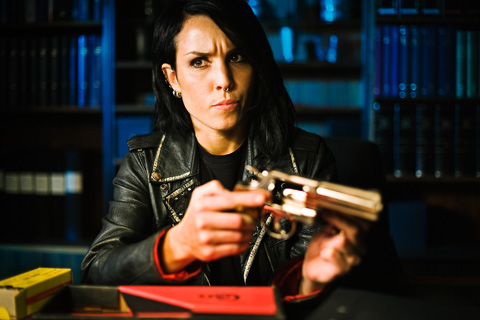When I read Stieg Larsson’s The Girl Who Played with Fire, I learned that it was possible to subsist on little more than Billy’s Pan Pizza when taking down a shadowy human trafficking organization. I learned that Billy’s Pan Pizza could get you through the day when your name was slandered in various Swedish broadsheets, and when your family’s malicious nature was revealed, and when you needed to hack into computers using tactics that the 2600 crowd would surely find dubious. Eat enough Billy’s Pan Pizza and you too would be able to access a powered down laptop! Perhaps it was a surrogate for a wild weekend involving a bag of shrooms and a fifth of scotch. Or merely the workaholic’s answer to intense labor. But it was certainly enough to alter reality and make it persuasive. If you had two breaks for Billy’s Pan Pizza, you could spend most of the day at your computer “with only a big bottle of Coca-Cola for company.” This was a Donnean existence to be sure, but then Billy’s Pan Pizza could take you quite far. If you walked into a 7-11, it was absolutely impossible not to walk out with several boxes of Billy’s Pan Pizza, along with an obsessive need to announce your shopping list to the reader. Because of this, I felt very sorry when Salander had exhausted her Billy’s Pan Pizza supply. Without the pizza, there was no way for her to win.
So I was considerably disappointed when the film adaptation failed to understand the true power of Billy’s Pan Pizza. Yes, it pimped Vaio and Mac and IKEA and other non-food products. The Swedish television industry (for this cinematic release is actually the first half of a TV miniseries) has learned a thing or two about product placement. But the problem here was that the filmmakers haven’t considered the right item to pimp. Aside from an unidentified pizza box tossed against a kitchen wall, there was no indication of Billy’s Pan Pizza maintaining its essential role. For this reason alone, I must condemn writers Soren Staermose and Jon Mankell and director Daniel Alfredson for this lackluster offering. The Millennium trilogy has been a remarkable commercial bonanza. Is it not fitting to maintain the commercialism in these cinematic counterparts? If these filmmakers cannot comprehend the importance of such a vital frozen food product, then they are as morally dissolute as tax cheats.
But maybe this criticism isn’t entirely fair. While I could complain about my failure to read the Swedish subtitles due to the crowded house and the screening room’s highly acute grade, I won’t. I’ll only say that I was seated behind The Girl Who Didn’t Understand That Her Fat Head Prevented Others from Reading the Subtitles. This extenuating circumstance may have had some bearing on my ability to review the film properly. Nevertheless, I was able to make out 95% of the missing words by listening. And I was delighted to encounter more overlap between Swedish and English word roots than I anticipated.
While I could point out that Staermose and Mankell don’t quite have the knack of synthesizing a mammoth novel that the previous writers (Nikolaj Arcel and Rasmus Heisterberg) had with The Girl with the Dragon Tattoo, I should point out that they are good enough to make the book’s “giant” relatively laconic. Director Alfredson has cast a rather silly blonde man named Micke Spreitz as Ronald Niedermann. He isn’t quite Richard Kiel. He resembles what might have happened if some Tiger Beat model from twenty years ago grew up and replaced his morning Wheaties with steroid shakes. Menace isn’t exactly his strong suit. He’s preposterous and not nearly as intense as he should be. But he’ll do.
There is semi-hot lesbian sex, which I’m sure will please a certain redblooded demographic too diffident to walk past the beads into a video store’s adult section. Not exactly Deneuve and Sarandon from The Hunger, but it will also do. Salander’s surprise breast implants didn’t find their way into the film, suggesting some mammary diffidence. The hospital flashbacks are shot in black-and-white, suggesting a chiaroscuro commitment to spelling out the bleeding obvious. But Michael Nyquist (Blomkvist) and Noomi Rapace (Salander) aren’t too bad in this. Yes, Nyquist and Rapace don’t really get many moments to confirm their onscreen chemistry this time around. And Nyquist, who was quite the studly lothario in the last one, doesn’t quite have the “talent” that Larsoon was keen to delineate in the book. My hope here is that Nyquist will be getting his rocks off in the next film to demonstrate how old school journalists are the new stallions.
Thanks to budgetary constraints, the Millennium‘s office (this time around) looks more like some fly-by-night startup rather than a major muckraking magazine. I was also disappointed that the juicy line “Your mother was a whore!” was uttered so calmly. For goodness sake, this is Swedish melodrama! We need such lines to be uttered with scenery-chewing integrity!
Nevertheless, I had fun with the film. Even if I did notice that other critics were baffled by the plot. I am not certain that they had read the book. And I’m still not sure if the Millennium film trilogy quite captures Larsson’s lurid feel. These films are certainly not the Red Riding Trilogy. But they’ll do.

Came upon THIS, and could not help sharing. Second photo, toward the bottom… Billy’s Pan Pizza.
http://9gag.com/gag/4177012